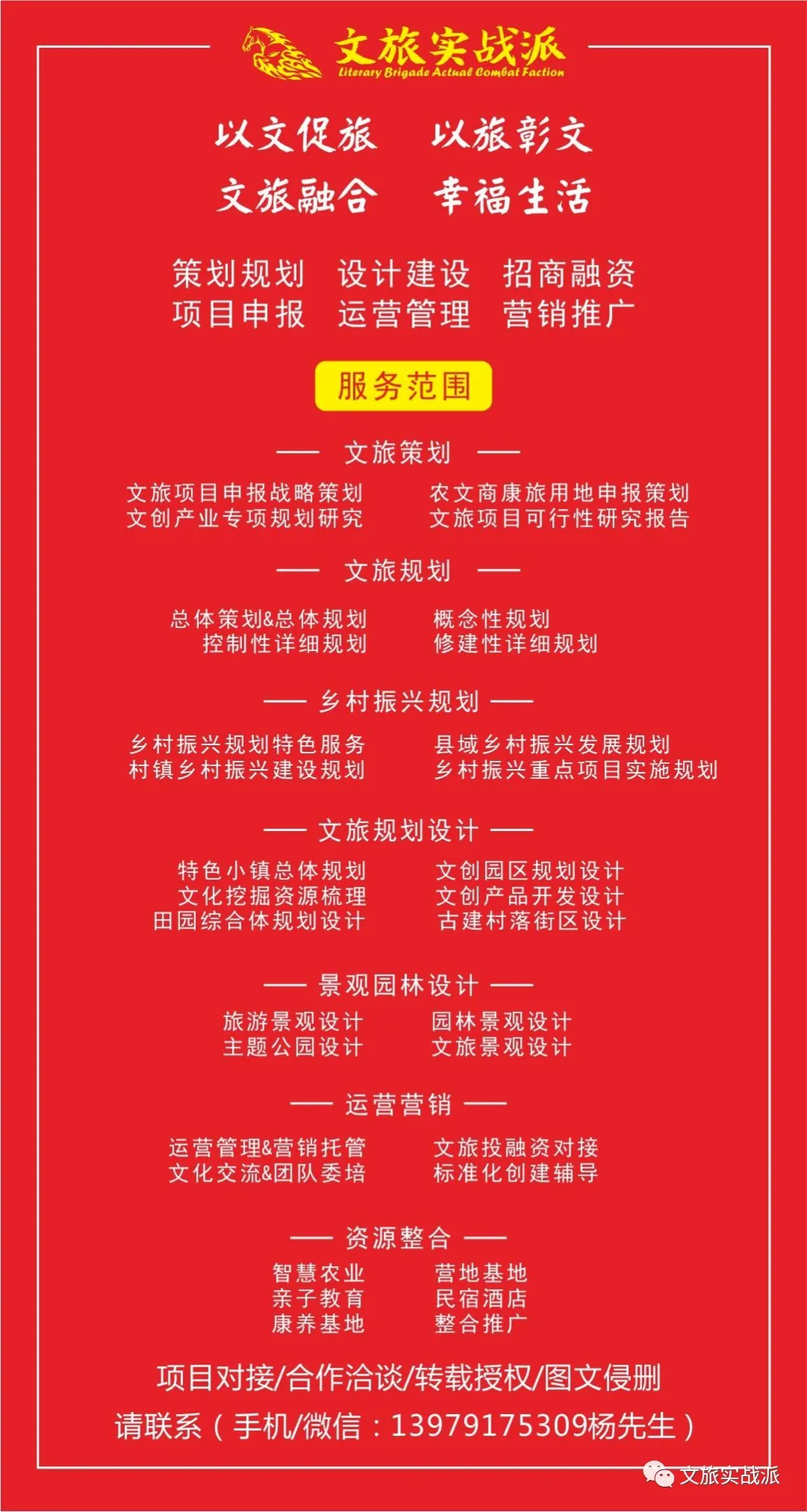
From January 30 to February 3, the AI Technology Temple Fair was held in Haidian District, Beijing. Here, technology is no longer just cold formulas and data; it has integrated into various aspects of life, art, sports, and education, sparking unexpected creativity. Robots can write the character “福” (fu), sing Peking opera, play guitar, compose poetry, and play soccer, bringing a carnival that combines culture, technology, and entertainment to the people. The image shows a robot playing guitar. Reported by Li Xue / Photo provided by Haidian District Science and Technology Association.
 Recently, many robots have appeared in the ancient town of Nanxiang, Jiading, Shanghai, singing, dancing, patrolling, and delivering food, showcasing various entertaining activities. Most of these robots come from enterprises based in the International Joint Innovation Center for Intelligent Manufacturing and Robotics. Tourists can listen to robots sing and dance with them; penguin robots attract customers at shop entrances; and robots similar to those from the CCTV Spring Festival Gala greet visitors in the ancient town. Reported by Huang Yiqin / Photo provided by Nanxiang Old Street Construction Development Co., Ltd.
Recently, many robots have appeared in the ancient town of Nanxiang, Jiading, Shanghai, singing, dancing, patrolling, and delivering food, showcasing various entertaining activities. Most of these robots come from enterprises based in the International Joint Innovation Center for Intelligent Manufacturing and Robotics. Tourists can listen to robots sing and dance with them; penguin robots attract customers at shop entrances; and robots similar to those from the CCTV Spring Festival Gala greet visitors in the ancient town. Reported by Huang Yiqin / Photo provided by Nanxiang Old Street Construction Development Co., Ltd.
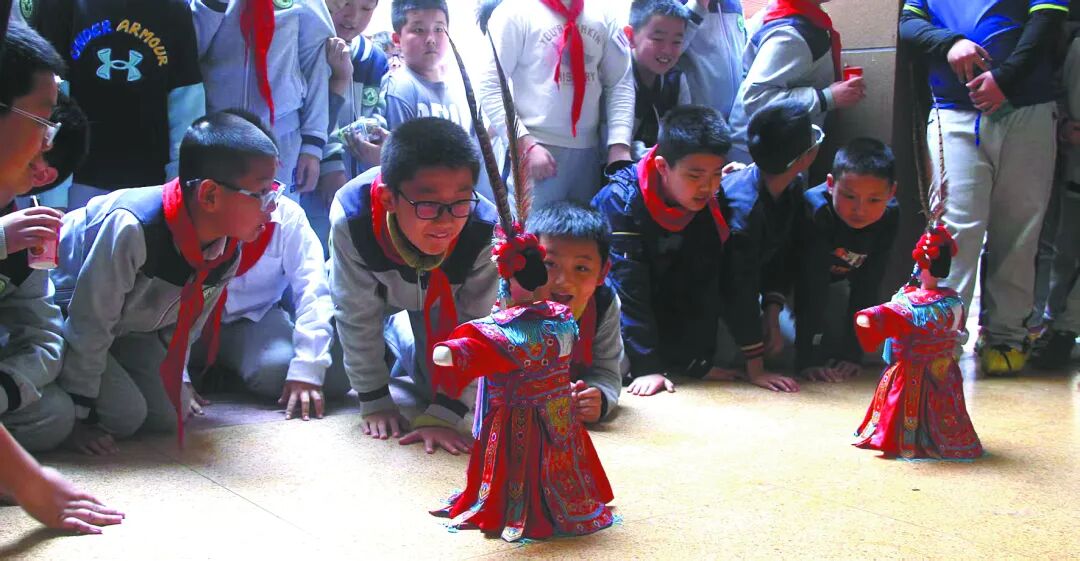 At the Jiangsu Provincial Drama School, a robot dressed in traditional costume, imitating the character Mu Guiying, made a stunning appearance during the “Innovative Integration Project of Traditional Opera Education” event. The robot skillfully changed its movements, vividly showcasing Mu Guiying’s heroic demeanor, attracting many students. It is reported that the Jiangsu Provincial Drama School collaborated with enterprises to customize the opera robot and jointly developed the robot’s opera stage steps and movements. Reported by Li Rongkun / Photo provided by Jiangsu Provincial Drama School.
At the Jiangsu Provincial Drama School, a robot dressed in traditional costume, imitating the character Mu Guiying, made a stunning appearance during the “Innovative Integration Project of Traditional Opera Education” event. The robot skillfully changed its movements, vividly showcasing Mu Guiying’s heroic demeanor, attracting many students. It is reported that the Jiangsu Provincial Drama School collaborated with enterprises to customize the opera robot and jointly developed the robot’s opera stage steps and movements. Reported by Li Rongkun / Photo provided by Jiangsu Provincial Drama School.
Question to DeepSeek: “Do you wish to merge with the Yushu robot?”
After deep contemplation, it answered that this is a complex topic involving technology, ethics, and future development. It analyzed this possibility from five perspectives: the potential for technological integration, scenarios for functional enhancement, existing technological barriers, ethical safety frameworks, and future evolution paths. It concluded that under current technological conditions, complete “consciousness fusion” remains in the realm of science fiction, but progressive functional collaboration is already underway, with explorations in early collaborative experiments gradually promoting the organic integration of intelligent agents and executors.
The entire response maintained a positive attitude while clearly outlining current technological limitations and future development potential, aligning well with human thought patterns, and the wisdom of the large model is astonishing. Relating to the Yushu robot wearing a floral cotton jacket and performing the Yangge dance on the stage of the CCTV Spring Festival Gala in 2025, the discussion and exploration of the combination of the DeepSeek large model and robots have become a hot topic in society.
From simple limb control ten years ago to today’s robots with intelligent brains and flexible limbs, the robotics industry has experienced explosive growth. In an increasing number of cultural tourism scenarios, people often see the presence of robots.
In the Taishan scenic area, a robotic dog transports garbage, with a static load capacity of up to 120 kilograms, demonstrating excellent balance and adaptability even on the steep and rugged Eighteen Bends; in the Wugong Mountain scenic area of Pingxiang, Jiangxi, robotic dogs are used for patrolling; the robot tour guide in Wuzhen not only provides explanations but can also recognize tourists’ expressions and actions, engaging in conversation with them. When tourists show interest in a particular attraction, the robot can provide more detailed background information… These all reflect the service functions of robots, replacing some repetitive human labor while compensating for areas where human labor cannot reach.
In addition to basic services, the interactive entertainment functions of robots are becoming increasingly comprehensive. In some cultural and educational venues, people can see robots that can paint, play the piano, compose music, and write articles, with their learning range nearly comparable to that of humans, and their proficiency continuously improving with increased training. The combination of technology and culture provides a unique interactive experience, enhancing the attractiveness of venues.
In 2024, the Ministry of Culture and Tourism, the Central Cyberspace Administration, the National Development and Reform Commission, the Ministry of Industry and Information Technology, and the National Data Bureau jointly released the “Action Plan for the Innovative Development of Smart Tourism,” encouraging and supporting cultural and educational venues, tourist attractions, vacation resorts, theme parks, etc., to use technologies and equipment such as VR, AR, XR, MR, the metaverse, holographic projection, digital light and shadow, and intelligent perception to build new immersive experience spaces for smart tourism, cultivating new scenarios for cultural and tourism consumption. This provides development opportunities for related industries such as intelligent robots.
The Beijing Embodied Intelligent Robot Innovation Center has released a robot named “Tianyi,” notable for its integration of an embodied intelligent emotional model that can respond to human emotions. It is foreseeable that the vast knowledge base of DeepSeek can significantly enhance the robot’s semantic understanding and language expression capabilities, in short—robots will become more human-like. Its functions in the cultural tourism field are even more imaginative, such as robots performing alongside actors, engaging in artistic creation together; robots traveling with humans can not only provide explanations and carry luggage but also offer emotional value.
In the future, whether robots will change the existing ecology of the cultural tourism industry and bring more stunning experiences to people, or merely serve as assistants in the industrial chain, remains uncertain. Currently, the application of robots in the cultural tourism field is still mainly focused on basic services, and their numbers have not achieved mass production and popularization, often appearing as eye-catching attractions. Whether they can enhance the operational and management levels of venues and scenic spots, and whether they can generate economic benefits, is still debatable. “There are already so many intelligent interactive software on the market; do robots really need to be able to talk and interact? It’s also good to focus on doing the work.” Some believe that robot services lack the warmth of human services and cannot achieve emotional resonance with people, and there is still much room for improvement in solving complex problems and responding to emergencies.
The entry of robots into the cultural tourism industry is not only a reflection of technological progress but also an opportunity for industry development. As culture and tourism enhance the country’s cultural soft power and the happiness index of its citizens, the ultimate service target is people. The purpose of promoting robots is not to show off technology but to enhance cultural perception and tourism experience through technology, allowing technology to serve more people.
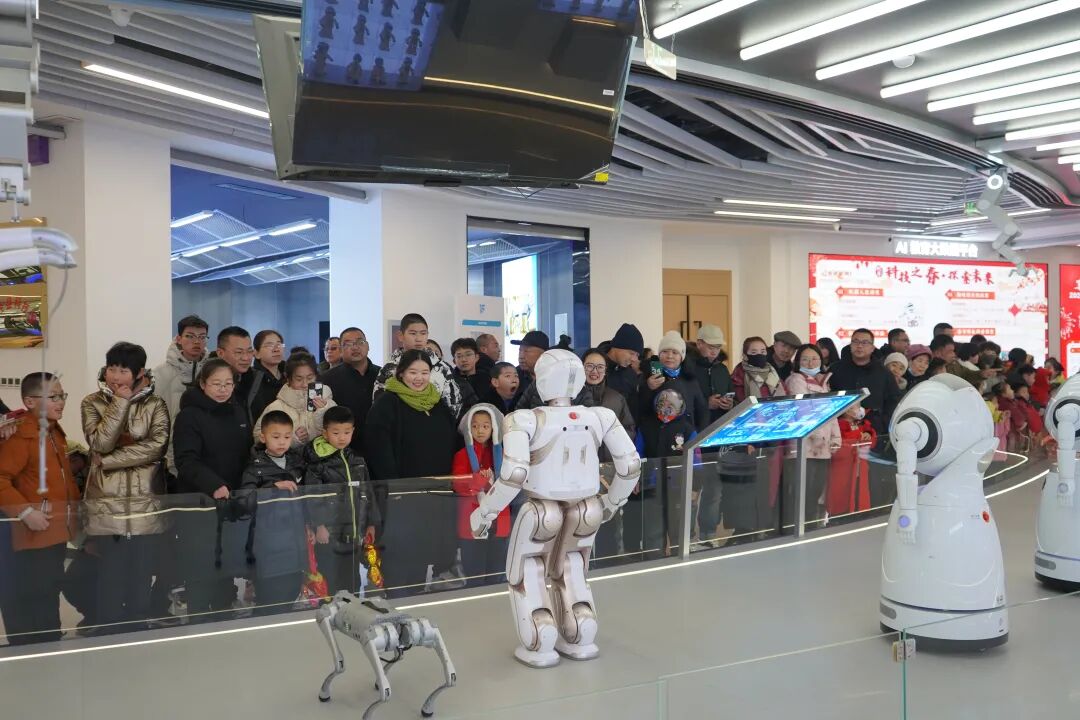 At the Science and Technology Museum in Jingxing County, Shijiazhuang City, Hebei Province, a science popularization activity showcased exciting performances by robots. Reported by Fan Haigang / Photo provided by Jingxing County Science and Technology Museum.
At the Science and Technology Museum in Jingxing County, Shijiazhuang City, Hebei Province, a science popularization activity showcased exciting performances by robots. Reported by Fan Haigang / Photo provided by Jingxing County Science and Technology Museum.
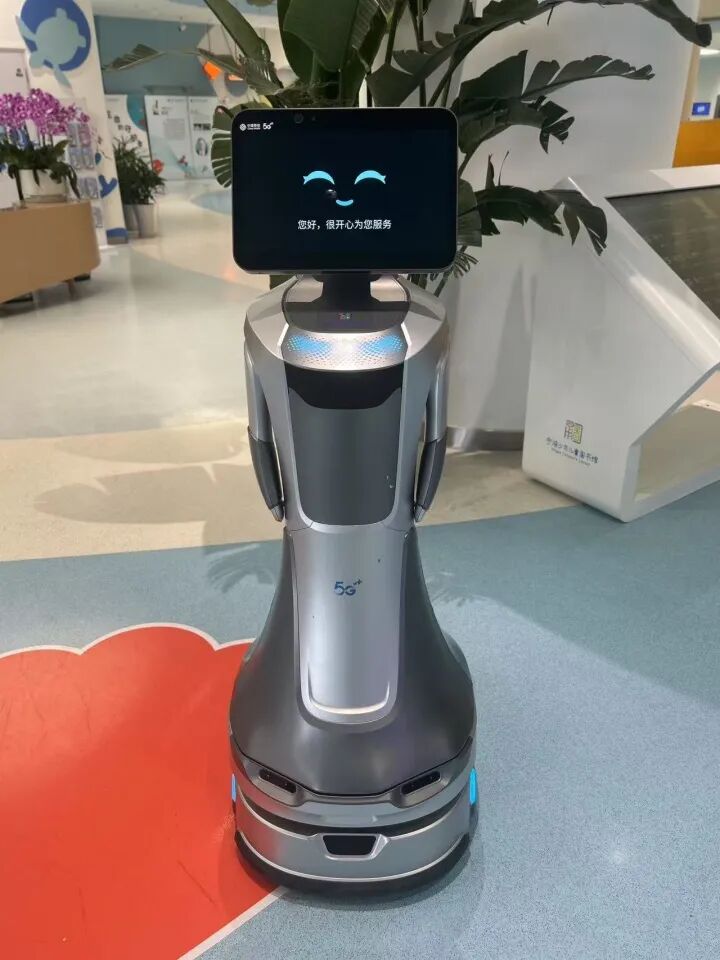 The AI visual inventory robot introduced at the Ningbo Library in Zhejiang is equipped with multiple high-definition cameras, capable of 360-degree image capture of books. The robot can accurately identify spine text, call numbers, etc., and compare them with the library database to quickly determine the detailed information of each book, reducing manual workload. In addition, this robot is connected to big data models like DeepSeek, enabling it to answer reader inquiries and recommend books based on needs, as well as plan reading routes. Another book delivery robot has also been put into use at the Ningbo Children’s Library, where readers only need to submit the required book information and the desired delivery point, and the robot’s navigation system can quickly plan a path in complex environments, avoiding obstacles and accurately delivering books to the destination. Reported by Zhou Chuanren / Photo provided by Ningbo Bayi Group Co., Ltd.
The AI visual inventory robot introduced at the Ningbo Library in Zhejiang is equipped with multiple high-definition cameras, capable of 360-degree image capture of books. The robot can accurately identify spine text, call numbers, etc., and compare them with the library database to quickly determine the detailed information of each book, reducing manual workload. In addition, this robot is connected to big data models like DeepSeek, enabling it to answer reader inquiries and recommend books based on needs, as well as plan reading routes. Another book delivery robot has also been put into use at the Ningbo Children’s Library, where readers only need to submit the required book information and the desired delivery point, and the robot’s navigation system can quickly plan a path in complex environments, avoiding obstacles and accurately delivering books to the destination. Reported by Zhou Chuanren / Photo provided by Ningbo Bayi Group Co., Ltd.
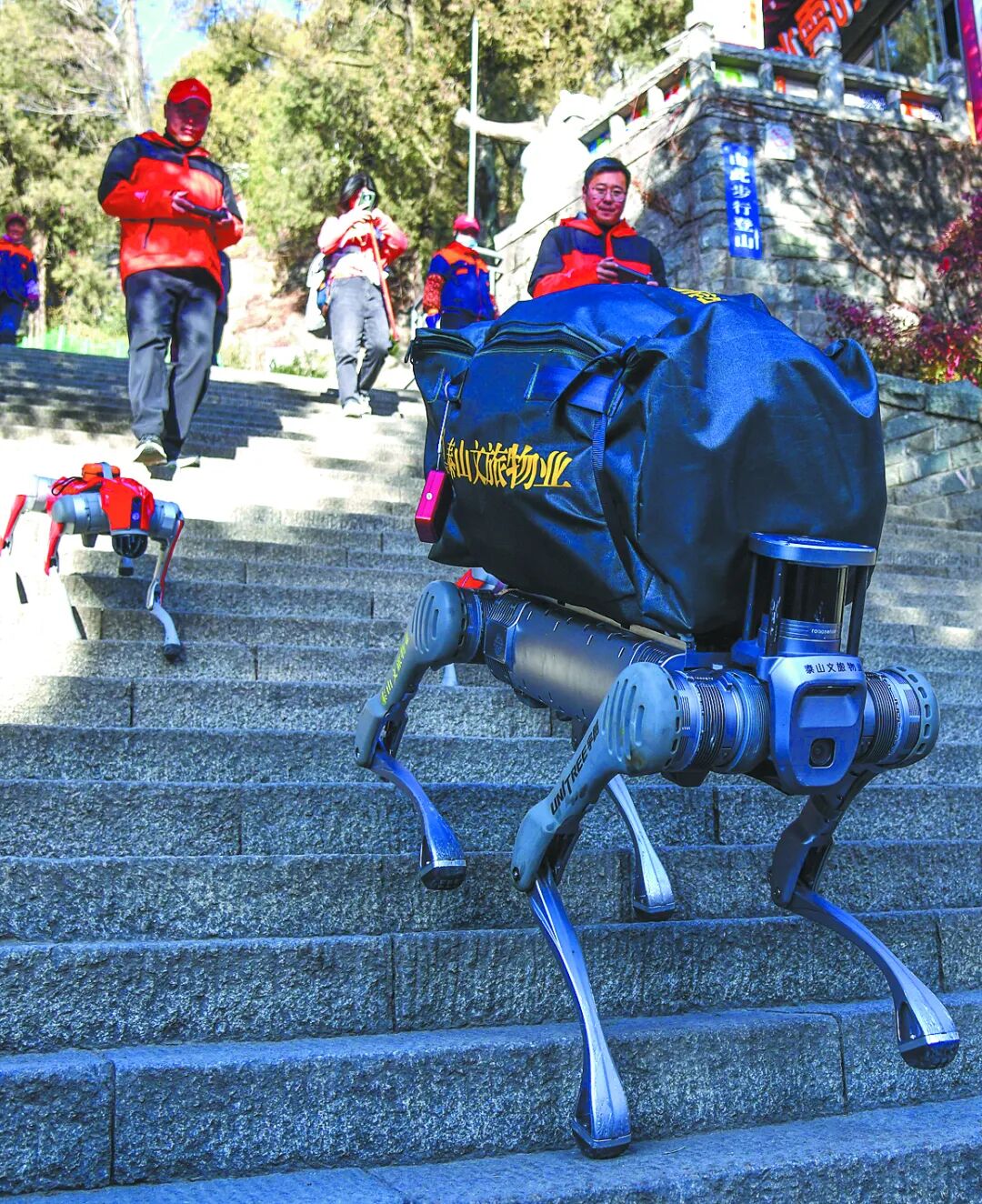 In the Taishan scenic area, a four-legged robotic dog carries heavy loads while walking in the mountains. The robotic dog’s static load capacity can reach 120 kilograms, and it can climb Taishan at a speed twice that of a human, adapting to 80% of the terrain. This year, tourists also tried out a climbing assist robot on Taishan, which can be widely applied in climbing, fitness, running, daily walking, and stair climbing in various life and work scenarios. Reported by Su Rui / Photo provided by Taishan Cultural Tourism Group.
In the Taishan scenic area, a four-legged robotic dog carries heavy loads while walking in the mountains. The robotic dog’s static load capacity can reach 120 kilograms, and it can climb Taishan at a speed twice that of a human, adapting to 80% of the terrain. This year, tourists also tried out a climbing assist robot on Taishan, which can be widely applied in climbing, fitness, running, daily walking, and stair climbing in various life and work scenarios. Reported by Su Rui / Photo provided by Taishan Cultural Tourism Group.
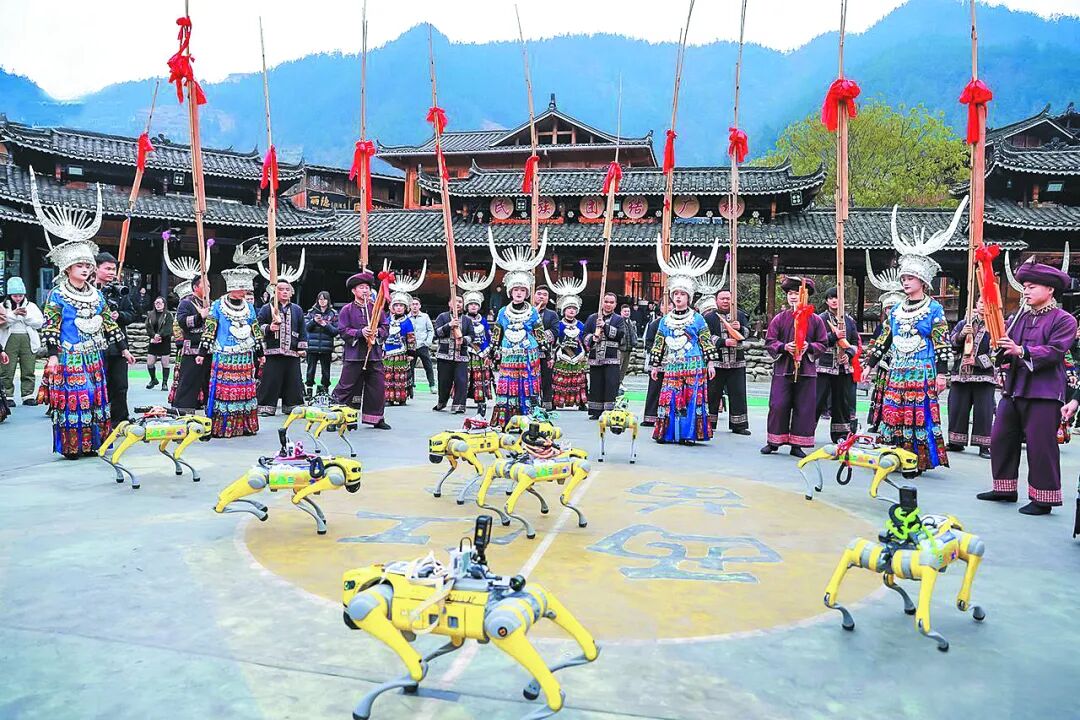 With their bright yellow bodies, they attract attention as soon as they appear: they can dance, shake hands, lie down, run, and perform various skills, and can even be walked by tourists while chatting along the way… The “AI Little Ant ROBOT,” powered by the big data of Mafengwo, can provide not just emotional value. Historical and cultural knowledge, attraction introductions, specialty food recommendations, and travel planning—whatever tourists can think of, it can engage in conversation about. The robot’s body is equipped with a GoPro for capturing great photos. When encountering foreign tourists, they are not shy, providing multilingual explanations to help tourists quickly understand attraction information. Next, Mafengwo plans to integrate the DeepSeek large model into the robot, combining its vast accumulated data to enhance the “AI Little Ant ROBOT”‘s analytical thinking capabilities, bringing better interactive experiences to tourists. Reported by Lu Na / Photo provided by Mafengwo.
With their bright yellow bodies, they attract attention as soon as they appear: they can dance, shake hands, lie down, run, and perform various skills, and can even be walked by tourists while chatting along the way… The “AI Little Ant ROBOT,” powered by the big data of Mafengwo, can provide not just emotional value. Historical and cultural knowledge, attraction introductions, specialty food recommendations, and travel planning—whatever tourists can think of, it can engage in conversation about. The robot’s body is equipped with a GoPro for capturing great photos. When encountering foreign tourists, they are not shy, providing multilingual explanations to help tourists quickly understand attraction information. Next, Mafengwo plans to integrate the DeepSeek large model into the robot, combining its vast accumulated data to enhance the “AI Little Ant ROBOT”‘s analytical thinking capabilities, bringing better interactive experiences to tourists. Reported by Lu Na / Photo provided by Mafengwo.
 On January 22, before the opening of the “Spring of All Seas—New Year Cultural Exhibition of the Year of the Snake” at the National Museum of China, a robotic dog performing a lion dance attracted a large audience. Reported by Lu Xu / Photo provided by China Cultural News.Source: China Cultural News
On January 22, before the opening of the “Spring of All Seas—New Year Cultural Exhibition of the Year of the Snake” at the National Museum of China, a robotic dog performing a lion dance attracted a large audience. Reported by Lu Xu / Photo provided by China Cultural News.Source: China Cultural News
【Cultural Tourism】Marketing Strategies for Scenic Areas: How to Transition from “Internet Celebrity” to “Word of Mouth”?
Development Models and Trends in Health and Wellness Tourism
The Future of Rural E-commerce: Sharing Agriculture!
Transforming Old Factories into New Gardens: The Zhongguancun Innovation Industry Base
This is the True Health and Wellness Cultural Tourism Town!
Sixteen Character Strategy for Planning Health and Wellness Land: Industry as the Foundation, Creativity as the Soul, Finance as the Tool, Operation as the Basis
Night Tours + Performances: Making Travel More “Dramatic”
Those “Wonderful Ideas” that Harm Scenic Areas
Practical Sharing | How to Create a Unique Leisure Tourism Town?
Six Types of “Pits” in Cultural Tourism Projects
When Doing Agricultural Tourism Projects, Have You Read These 10 Basic Policy Documents?
Bringing Health and Wellness into the Countryside, Endowing Leisure Agriculture with New Functions!
“Characteristic Town + All-Region Tourism + Industry-Town Integration” Model
Three Soul-Searching Questions for Study Tours: Where to Go? What to Do? How to Do It?
Cultural Tourism Integration: How to Create a First-Class Vacation Destination?
【Cultural Tourism】”Intangible Cultural Heritage + Elegant Gatherings + Homestays” The Success Path of Xiaoyukou Village
【Rural Revitalization】How to Break the Development Dilemma of Rural Industries?
Deep Reflections on the Agricultural Full Industry Chain
Creativity | What IP Sparks Will Emerge When Agriculture Meets Art?
Night Economy: How to Transition from Night Scene “Lighting Up” to Economic “Activating”?

